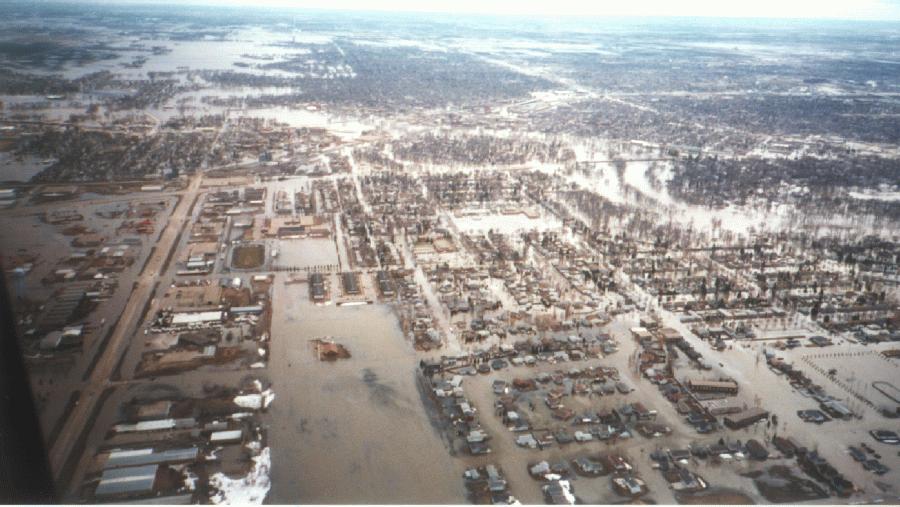GRAND FORKS, BC – People, property and businesses in and around Grand Forks will be further protected from floodwaters with the construction of a new dike and drainage system, the latest component of the city’s flood mitigation program.
“Grand Forks was devastated by flooding in May 2018, when about one-third of the city’s 4,000 residents were forced to evacuate their homes, among thousands throughout the Boundary region,” said Bowinn Ma, Minister of Emergency Management and Climate Readiness. “The flood-mitigation work we have done with the city since 2018 paid off in a big way last year, preventing what could have been very serious flooding. This latest project will strengthen Grand Forks even further against future high-water events, better protecting people for years to come.”
The 714-metre dike construction and 505-metre drainage system project is in the southern portion of the city and is designed to protect a 100-home neighbourhood and 17-hectare industrial area that includes the city public-works yard and wastewater treatment facility.
“I want to express my appreciation for the continued support from the Province,” said Everett Baker, mayor of Grand Forks. “In addition to the original funding of $31.6 million under the Disaster Mitigation and Adaptation Fund, support from the provincial government has helped complete additional projects, keeping our city protected from future flooding events. Already, work completed has been proven out through last year’s freshet.”
With this new investment, the Province has provided more than $39.1 million in flood recovery and mitigation in Grand Forks and surrounding area since 2018.
With combined support from the federal and provincial governments and the City of Grand Forks, the Grand Forks Flood Mitigation Program will protect the city’s core neighbourhoods, businesses, industries and critical infrastructure, while restoring nine hectares of floodplain to reduce flood risk. Overall, the program is more than 70% complete.
“The flood of 2018 changed the way Grand Forks residents, myself included, view our rivers,” said Roly Russell, MLA for Boundary-Similkameen and Parliamentary Secretary for Rural Development. “Each spring, the community casts a cautious eye at river levels, and each spring it feels like stress levels drop a little because of the achievements we have made in shoring up our flood defences since 2018. The accomplishments of the community, in partnership with government, are remarkable and a testament to the value of collaboration between and among individuals, organizations and all levels of government.”
This latest project in the Grand Forks Flood Mitigation Program is funded from the Disaster Risk Reduction-Climate Adaptation stream of the Community Emergency Preparedness Fund (CEPF). Previous funding from the CEPF helped Grand Forks restore floodplain to a former neighbourhood by removing a 1974 dike, houses and infrastructure, and creating a 1.8-hectare off-river bypass channel to reduce flood risk and provide fish habitat.
The worst flood in the region’s recorded history struck the Grand Forks area on May 10, 2018, after a week of high temperatures and three days of rainfall. The Kettle and Granby rivers exceeded a 200-year flood level. Conditions were made worse by rapid melting of a snowpack that was almost two and a half times the average for early May.
The Province has invested $369 million into the CEPF since it was established in 2017. More than $222 million has been provided to First Nations and local governments, through the CEPF, for more than 1,970 projects. More than half of this funding has gone to communities since December 2022, demonstrating the Province’s commitment to ramping up defences against climate emergencies throughout B.C.
The CEPF helps communities better prepare for and lessen the adverse effects of climate-related emergencies by funding local projects and initiatives in several categories. In addition to disaster risk-reduction and climate adaptation, other categories include public notification and evacuation-route planning, Indigenous cultural safety and cultural humility training, and emergency support services equipment and training. The CEPF is administered by the Union of British Columbia Municipalities on behalf of the Province.
Quick Facts:
- During the 2018 Grand Forks floods:
- Thirty-eight people were rescued via boat or helicopter.
- Of the 1,500 buildings evacuated in the Boundary region, more than 500 were damaged.
- Communities in the entire Boundary region experienced infrastructure damage and drinking-water advisories.
- Damage was estimated at more than $38 million to agricultural operators, residential neighbourhoods, commercial areas and industrial operations.









